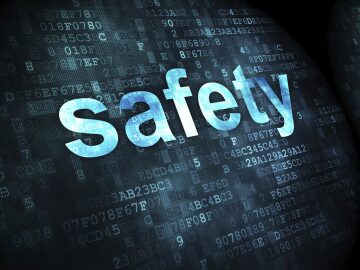
ExxonMobil has traditionally used industry standards driven by the US Occupational Safety and Health Administration (OSHA) to classify safety events on the basis of the treatment or restrictions provided. However, this treatment-based approach has limitations. With its focus on administrative reporting and incident-escalation management, the approach does not naturally resonate with workforce members to enable desired cultural changes. A hurt-based approach has been adopted to mitigate the limitations of the treatment-based approach.
Traditional Treatment-Based Approach
In the treatment-based approach to personnel safety, an incident, from the treatment or restrictions provided, is classified as a lost-time incident (LTI), restricted-work incident (RWI), medical-treatment incident (MTI), first aid, no treatment, near miss, or unsafe act/unsafe condition. These are usually represented by the traditional safety pyramid (Fig. 1). Benefits of this approach include
- It provides historical metrics common across multiple industries.
- It allows comparisons on a similar basis.
- It is consistent with many government/regulatory-agency reporting requirements.
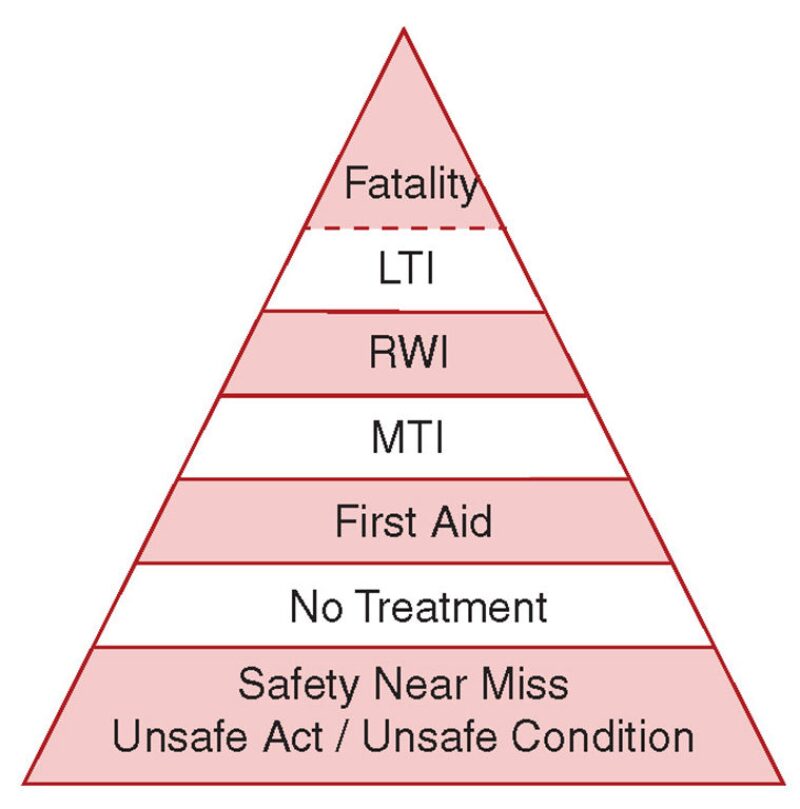
However, this approach also has significant limitations:
- It is not consistently descriptive of actual injury severity; for example, body damage such as a minor laceration, a sprained ankle, or a broken neck could each be correctly classified as an LTI, depending on the circumstances.
- It does not have an integral potential injury severity; safety events with low actual consequence (e.g., minor hurt, near misses) are often overlooked or simply not reported.
- It creates a blind spot relative to exposures for severe injuries by focusing solely on traditional safety metrics [e.g., total recordable incident rate (TRIR), LTI rate (LTIR)]; certain activities and activities managed by safety controls require greater exposure awareness.
- It is not an enabler for a culture of caring; workers can perceive case-management priority to be about reducing the number of recordables (perhaps by minimizing treatment) and not about the elimination of all injuries.
Nobody Gets Hurt
The phrase “nobody gets hurt” was coined in 2000 and later adopted by ExxonMobil as the corporation’s safety vision for a workforce that believes all injuries are preventable and where all workers accept personal accountability for their own safety and are willing and able to intervene to ensure the safety of others. It was understood that progressing the vision would require long-term, visible commitment by safety leaders at all levels of the organization, from the executive office to the front line. It was understood that achieving the vision would be a journey, not a project or an initiative or a singular destination.
In May 2001, the new safety vision of Nobody Gets Hurt was discussed and an initiative was presented challenging the organization to achieve the vision as soon as possible. The objective was to eliminate all treatment-based incidents meeting the recording criteria for an injury or illness under OSHA recordkeeping requirements.
Management believed the primary concerns should always be the care for any injured person and the assessment of incidents to prevent future hurt. Unfortunately, some workers believed the most important question driving the case-management process was “Is it a recordable or not?” This perception by some that safety was all about statistics was viewed as an obstacle to achieving the vision. A strategic navigational correction was needed in the journey to Nobody Gets Hurt to win over the workforce and enable the desired pervasive culture of safety.
Expectations of Safety Leadership
Safety leadership is not a task assigned to the safety department. Safety leadership is not a position or title reserved for senior management. Safety leadership is a value expected of every person within the workforce, whether employee or contractor. To move the journey toward a common safety vision, a few critical actions must be taken. These are ensuring that the leadership
- Aligns with the vision
- Believes the vision can be achieved
- Personally and passionately commits to the vision
- Sincerely promotes the vision to the workforce
- Celebrates successes
From Compliance to Culture
An analogy of how a safety journey can progress is the evolution of seat-belt usage. Seat-belt use was not always regulated; older automobiles did not include them, and, if they did, they simply were not used (it was not in the culture). Once regulations were passed and it became against the law not to wear seat belts, people started wearing them out of compliance. People did not necessarily believe in seat belts; they simply used them to avoid the fines and penalties of noncompliance. Later, people realized that wearing seat belts had become a habit. People no longer had to decide consciously to wear seat belts each time they got into an automobile. Over time, some grew wiser and started wearing seat belts willingly; they now believed seat belts could save their lives in a traffic accident. Possibly, people started encouraging others to use them as well. Perhaps now people make sure their spouses, children, and guests always wear seat belts when in an automobile because that is simply the way things are done. That is a culture of safety.
Serious Injuries and Fatalities
A 2010 industry study found that traditional safety-pyramid principles were not driving elimination of serious injuries and fatalities (SIFs). Even though it is typical for many companies’ TRIR and LTIR to be trending downward, it is also very common for their fatal-accident rates to be at a plateau or actually increasing. The idea that minor injuries could predict more-serious injuries is embedded in our culture; however, the study indicates that a reduction of injuries at the bottom of the pyramid does not correspond to a proportionate reduction of SIFs. This is because not all injuries have SIF potential. The study found that a relatively small subset, approximately 20%, of all incidents had the potential to be an SIF. This finding challenged the traditional thinking that focusing on eliminating incidents in general would ultimately reduce the more-severe injuries at the top of the pyramid.
The majority of injuries simply do not have the potential to become high-consequence incidents regardless of the circumstances surrounding the safety event. This is because underlying causes and factors for SIFs are different from those for less-serious injuries. SIFs are disproportionately related to certain activities (e.g., working at height, crane and lifting operations, man/machine interface) and to activities managed by certain safety controls (e.g., lock-out/tag-out, confined-space entry, energy isolation). Ensuring workforce awareness of the increased exposures generated by these types of work activities is critical in the elimination of SIFs.
Drivers for the Hurt-Based Approach
The hurt-based approach to safety was approved and implemented across all of ExxonMobil’s upstream companies effective January 2012. Critical drivers to adoption included
- A proven 6-year history in ExxonMobil Drilling, showing improvements across all levels of the pyramid, including SIFs
- Integral assessment of potential injury severity
- Consistent description of actual injury severity
- Resonance with workers to enable the desired safety culture based on caring for people
- Natural safety language in most, if not all, global cultures—protect family, prevent injuries
A graphical analysis of the rate of workers hurt is provided in Fig. 2. From a high of 6.50 in 2004 to a low of 1.49 in 2011, Drilling’s total hurt incident rate (THIR) improved such that five fewer people were getting hurt for every 200,000 exposure-hours.
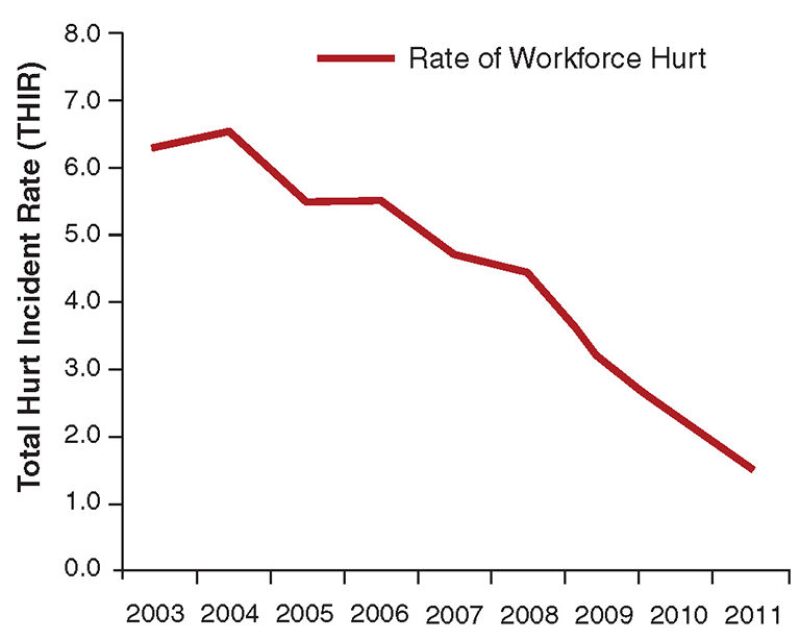
A graph of ExxonMobil Drilling’s serious injuries and fatalities on both an actual and a potential basis is shown in Fig. 3. The rate of actual high-consequence safety events (SIFs) decreased, while incidents with high consequence potential decreased significantly.
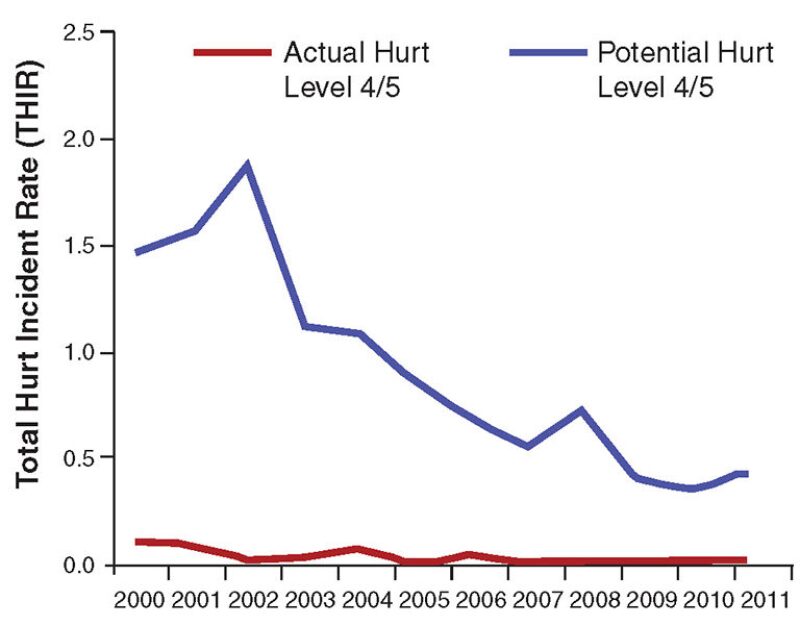
Methodology and Process
In implementing the hurt-based approach across ExxonMobil’s upstream companies, slight modifications were made to the severity scale. These new hurt-based severity levels are shown in Fig. 4 along with examples of the physical body damage typical of each level. The “Duration” column provides an additional resource to assist in determining the hurt level of incidents on the basis of the amount of time the injured person takes to return to normal duties without any decrease in work effectiveness or efficiency.
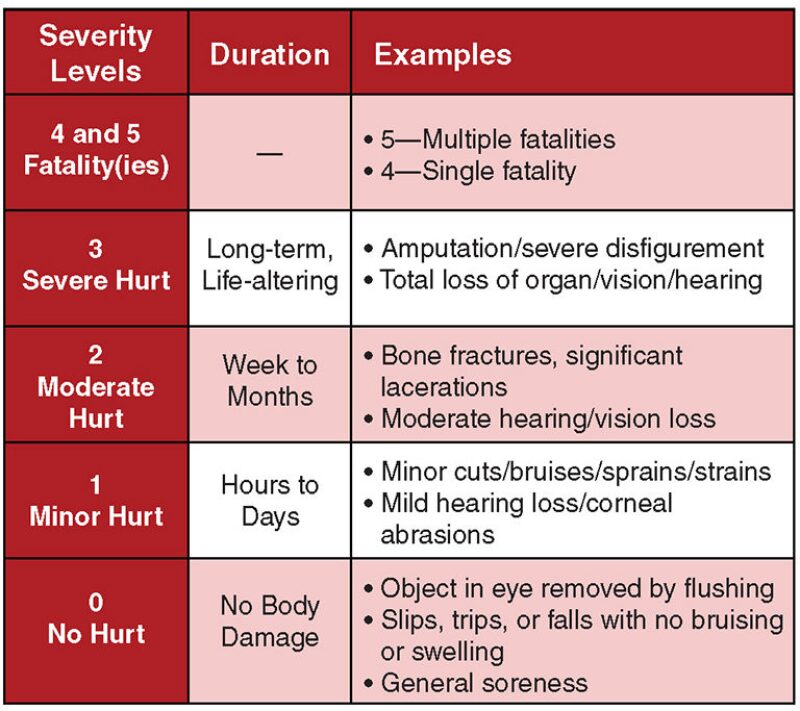
The process for determining the actual hurt level (AHL) of an incident is to contrast the actual physical effect, injury, or illness to a person against the hurt-based severity levels (Fig. 4) and assign an AHL. The determination of potential hurt level (PHL) is a more structured process but is still very simple. For PHL determination, the basic process is to
- Use the actual safety event as it occurred (do not speculate on what could have happened at this point)
- Use the actual hazards that existed at the time of the event (do not add fictional or additional hazards)
- Determine any applicable pre-event mitigations in place at the time of the event
- Discuss feasible-but-reasonable scenarios that would result in the highest risk to people, and consider to what level the pre-event mitigations in place would have reduced the severity of an injury in these scenarios
- Use the hurt-based severity scale to assign a PHL, using the potential hurt that could have occurred in the worst-case feasible-but-reasonable scenario,
- Document the PHL rationale (e.g., scenario used, mitigations in place, maximum hurt possible)
Mining the Diamond
The ExxonMobil Development Company implemented an initiative, called “mining the diamond,” to increase awareness of and prioritize action on high-consequence potential safety events (Fig. 5). A safety event is considered a high-consequence event if it results in multiple fatalities (AHL5), a single fatality (AHL4), or a life-altering injury (AHL3). A safety event is considered a high-consequence potential event if there was feasible but reasonable potential for it to have resulted in multiple fatalities (PHL5), a single fatality (PHL4), or a life-altering injury (PHL3). By definition, a high-consequence safety event is also considered a high-consequence potential event because both the AHL and the PHL are 3 or higher. High-consequence potential safety events are also known as PHL3+, or diamond, events.

It is critical that safety leadership focus on assessing every safety event, regardless of recordability, severity, or whether someone was actually hurt. However, that does not necessarily mean every safety event will yield enhanced value from a comprehensive, multidisciplinary team taking weeks to assess the event using the latest in incident-investigation technology and methodology. Mining the diamond is the first step in prioritizing resources for a safety event that has occurred. The majority of safety events can be adequately assessed to learn lessons within 1–2 hours, yet some take several hours, a few take days, and the extraordinary event may take weeks. The majority of incidents can be assessed with less-formal, less-comprehensive investigation techniques. All safety events that fall inside the diamond, on the basis of their AHL3+ or PHL3+ rating, have the potential to maim or kill. These safety events warrant and require a detailed assessment to maximize lessons learned so that actions can be taken to prevent similar future events; therefore, all diamond events require in-depth root-causal-factor analysis.
This article, written by Editorial Manager Adam Wilson, contains highlights of paper SPE 163757, “A Hurt-Based Approach to Safety,” by R.M. Smith, SPE, and M.L. Jones, ExxonMobil, prepared for the 2013 SPE Americas E&P Health, Safety, Security, and Environmental Conference, Galveston, Texas, 18–20 March. The paper has not been peer reviewed.
